

The opinion of the below article does not make sense to me, I mean, why bring arthritis medicine to a baby, but you never know.
I believe the gifts were brought to Jesus simply to show their respect and honor of the King of Kings and Lord of Lords (Rev 19:16).
Tomorrow we’ll look at…
1 Corinthians 3
Fellow Laborers for God
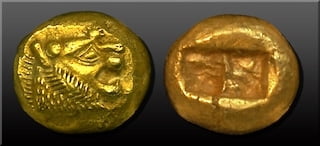
This was the first coin struck with an obverse portrait produced for commerce, and it is remarkably preserved.
It is composed of a electrum, which is a mixture of Gold and Silver occurring in nature.
While crudely produced, the detail is extraordinary and it is hard to believe it was struck over 2,600 years ago.
1 And I, brethren, could not speak unto you as unto spiritual, but as unto carnal, even as unto babes in Christ.
2 I have fed you with milk, and not with meat: for hitherto ye were not able to bear it, neither yet now are ye able.
3 For ye are yet carnal: for whereas there is among you envying, and strife, and divisions, are ye not carnal, and walk as men?
“Walk as men” – like men of the world instead of men of God. They were following merely human standards.
4 For while one saith, I am of Paul; and another, I am of Apollos; are ye not carnal?
5 Who then is Paul, and who is Apollos, but ministers by whom ye believed, even as the Lord gave to every man?
6 I have planted, Apollos watered; but God gave the increase.
“I have planted” – Paul’s work was of a pioneer nature, preaching where no one had ever preached before.
“Apollos” – Apollos worked in the established church, edifying the converts Paul had won.
7 So then neither is he that planteth anything, neither he that watereth; but God that giveth the increase.
8 Now he that planteth and he that watereth are one: and every man shall receive his own reward according to his own labor.
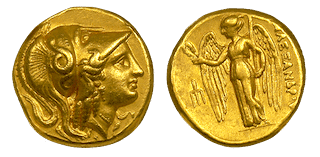
Extra Fine
This Gold Distater, or double-stater, is one of the most remarkable coins in the Ancient world.
In fact, some refer to it as the “High Relief” of the Ancient coin world as it appears three dimensional due to an extraordinary level of craftsmanship and size.
Containing over a half-ounce of pure Gold, the obverse features Athena the Goddess of War and Nike, the Goddess of Victory on the reverse.
This is the most impressive, notable and desirable coin issued during the reign of Alexander the Great and is highly prized today.
9 For we are laborers together with God: ye are God’s husbandry, ye are God’s building.
“God’s husbandry” – the people are God’s farm.
“God’s building” – they are also depicted as God’s temple. He owns the farm and the building where both Paul and Apollos worked.
10 According to the grace of God which is given unto me, as a wise master builder, I have laid the foundation, and another buildeth thereon. But let every man take heed how he buildeth thereupon.
“I have laid the foundation” – by preaching Christ and Him crucified.
11 For other foundation can no man lay than that is laid, which is Jesus Christ.
12 Now if any man build upon this foundation gold, silver, precious stones, wood, hay, stubble;
13 Every man’s work shall be made manifest: for the day shall declare it, because it shall be revealed by fire; and the fire shall try every man’s work of what sort it is.
“Fire” – God’s judgment. The work of some believers will stand the test while that of others will disappear – emphasizing the importance of teaching the pure word of God.
For example, those that preach the “complete” word of God and without any alterations will stand the test, and those that make alterations or leave parts out, such as the Catholics and Rick Warren, will not find their way to heaven.
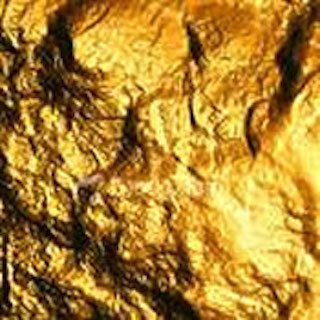
Homer,in the “Iliad” and “Odyssey,” makes mention of gold as the glory of the immortals and a sign of wealth among ordinary humans.
In Genesis 2:10-12, we learn of the river Pison out of Eden, and “the land of Havilah, where there is gold: and the gold of that land is good?”
As far back as 3100 B.C., we have evidence of a gold/silver value ratio in the code of Menes, the founder of the first Egyptian dynasty.
In this code it is stated that “one part of gold is equal to two and one half parts of silver in value.”
This is our earliest of a value relationship between gold and silver.
In ancient Egypt, around the time of Seti I (1320 B.C.), we find the creation of the first gold treasure map now known to us.
Today, in the Turin Museum is a papyrus and fragments known as the “Carte des mines d’or.” It pictures gold mines, miners’ quarters, road leading to the mines and gold-bearing mountains, and so on.
14 If any man’s work abide which he hath built thereupon, he shall receive a reward.
15 If any man’s work shall be burned, he shall suffer loss: but he himself shall be saved; yet so as by fire.
“Yet so as by fire’ – perhaps a Greek proverbial phrase, meaning “by a narrow escape,” with one’s work burned up by the fire of God’s pure justice and judgment.
16 Know ye not that ye are the temple of God, and that the Spirit of God dwelleth in you?
“Temple of God” – God’s church. Paul does not mean here that each of his readers is a temple of the Holy Spirit. He says, “Ye (plural) are God’s temple (singular).” In 6:19 he speaks of each Christian as a temple of the Holy Ghost.
17 If any man defile the temple of God, him shall God destroy; for the temple of God is holy, which temple ye are.
“Him shall God destroy” – Strong language, indicating that such a foolish laborer is not one of the Lord’s true servants. This is in contrast to the thought of v. 15, where the faulty Christian worker is saved, but his work is destroyed (he suffers loss of reward).
In the contrast of chapters 1-4 Paul here refers to people who tear the local church apart by factions and quarrels.
18 Let no man deceive himself. If any man among you seemeth to be wise in this world, let him become a fool, that he may be wise.
19 For the wisdom of this world is foolishness with God. For it is written, He taketh the wise in their own craftiness.
20 And again, The Lord knoweth the thoughts of the wise, that they are vain.
21 Therefore let no man glory in men. For all things are yours;
22 Whether Paul, or Apollos, or Cephas, or the world, or life, or death, or things present, or things to come; all are yours;
23 And ye are Christ’s; and Christ is God’s.
Why Did the Magi Bring
Gold, Frankincense and Myrrh?
Medicinal uses of frankincense may help explain the gifts of the magi.
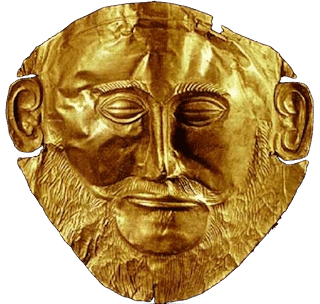
In one tomb, archaeologists found bones of a 15-year-old girl with a unique funeral mask made up of thin gold eye-covers, gold plate for the mouth and a plaque with an engraved sun placed on her chest.
Precious metals have long been valued, treasured and used as a medium of exchange. Sometime around 650 B.C. coins made their first appearance, and they were used both in commerce and as a means of promotion or propaganda–a purpose they continue to serve today.
Were the gifts of the magi meant to save Jesus from the pain of arthritis? It’s possible, according to researchers at Cardiff University in Wales who have been studying the medical uses of frankincense.
Since the early days of Christianity, Biblical scholars and theologians have offered varying interpretations of the meaning and significance of the gold, frankincense and myrrh that the magi presented to Jesus, according to the Gospel of Matthew (2:11).
These valuable items were standard gifts to honor a king or deity in the ancient world: gold as a precious metal, frankincense as perfume or incense, and myrrh as anointing oil.
In fact, these same three items were apparently among the gifts, recorded in ancient inscriptions that King Seleucus II Callinicus offered to the god Apollo at the temple in Miletus in 243 B.C.
The Book of Isaiah, when describing Jerusalem’s glorious restoration, tells of nations and kings who will come and “bring gold and frankincense and shall proclaim the praise of the Lord” (Isaiah 60:6).
Although Matthew’s gospel does not include the names or number of the Magi, many believe that the number of the gifts is what led to the tradition of the Three Wise Men.
In addition to the honor and status implied by the value of the gifts of the magi, scholars think that these three were chosen for their special spiritual symbolism about Jesus himself—gold representing his kingship, frankincense a symbol of his priestly role, and myrrh a prefiguring of his death and embalming—an interpretation made popular in the well-known Christmas carol “We Three Kings.”
The traditional gifts of the magi—gold, frankincense and myrrh—may have had symbolic as well as practical value. Researchers believe the medicinal uses of frankincense were known to the author of Matthew’s gospel.
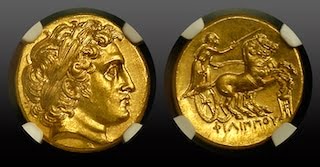
Absolutely phenomenal and extremely rare Gold Stater of the highest quality.
The overall look is simply phenomenal given it was issued over 2,300 years ago. Struck during the reign of Phillip II, the father of Alexander the Great, it is without question a museum quality antiquity.
Comprised of approximately ¼ ounce of pure Gold, the obverse features the head of Apollo and the reverse a charioteer with two intricately etched horses.
There is no question the artist who carved these dies was one of the finest of his time.
Still others have suggested that the gifts of the magi were a bit more practical—even medicinal in nature.
Researchers at Cardiff University have demonstrated that frankincense has an active ingredient that can help relieve arthritis by inhibiting the inflammation that breaks down cartilage tissue and causes arthritis pain.
The new study validates traditional uses of frankincense as an herbal remedy to treat arthritis in communities of North Africa and the Arabian Peninsula, where the trees that produce this aromatic resin grow.
Did the Magi “from the East” know of frankincense’s healing properties when they presented it to young Jesus?
…the tomb of Apostle Philip found.
Visits: 0
